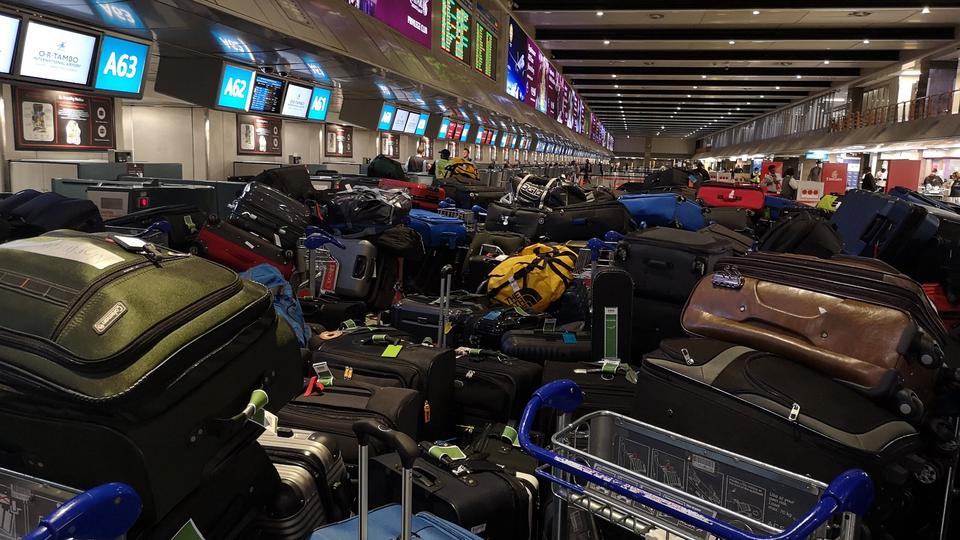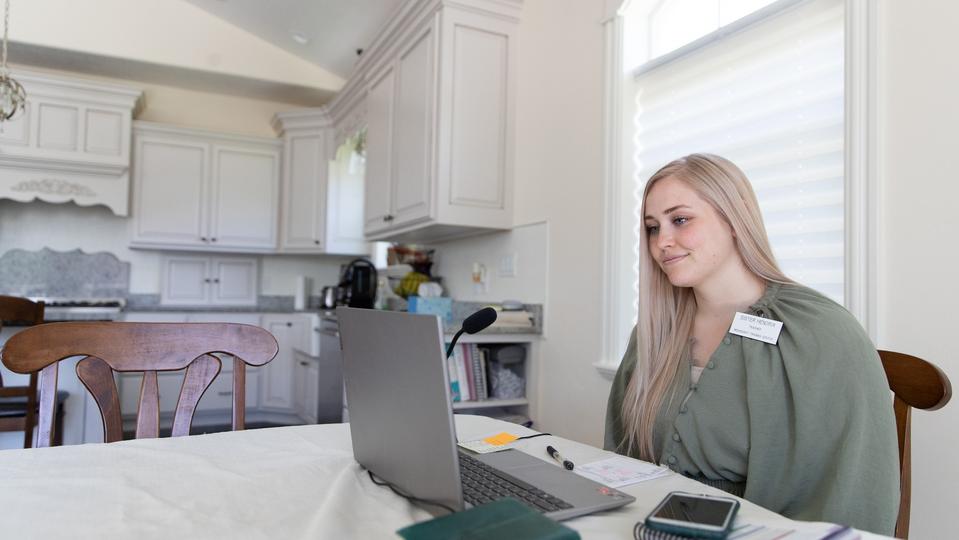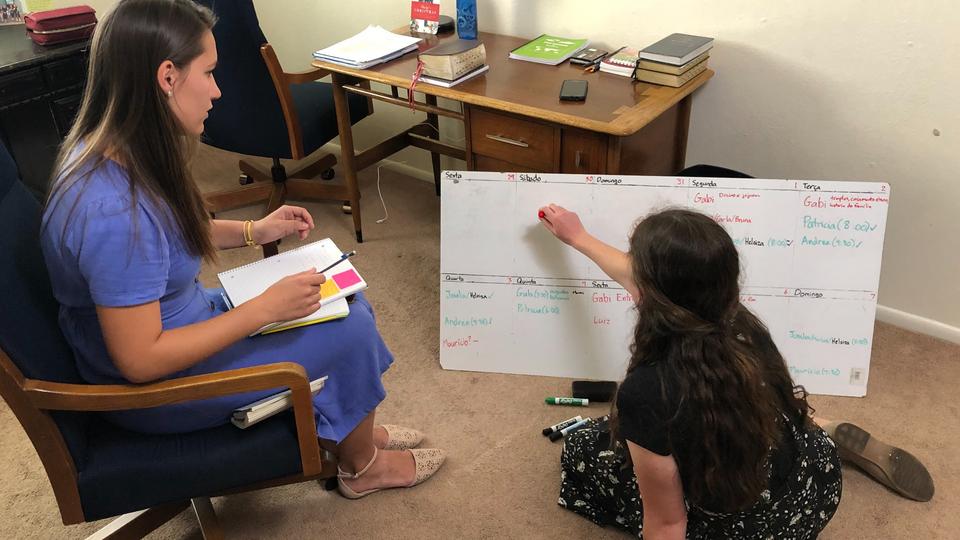Thousands of reassigned missionaries of The Church of Jesus Christ of Latter-day Saints are heading out to new assignments in their home countries following disruptions due to the coronavirus pandemic.
-
- Tracie's Missionary Story - March 22, 2020 - Airport
- Tracie's Missionary Story - March 25, 2020 - Airport
- Reassigned Missionaries
- Tracie's Missionary Story - March 25, 2020 - Airport
- Tracie's Missionary Story - March 25, 2020 - Airport
- Tracie's Missionary Story - March 25, 2020 - Airport
- Tracie's Missionary Story - March 22, 2020 - Airport
- Tracie's Missionary Story - March 22, 2020 - Airport
- Tracie's Missionary Story - Bags Stuck at Area Office - Airport
- Reassigned Missionaries
- Tracie's Missionary Story - May 20, 2020
- Tracie's Missionary Story - May 20, 2020
- Tracie's Missionary Story - May 20, 2020
- Tracie's Missionary Story - May 20, 2020 - MTC
- Tracie's Missionary Story - May 20, 2020 - MTC
- Tracie's Missionary Story - May 20, 2020 - MTC
- Tracie's Missionary Story - March 22, 2020 - Airport
- Tracie's Missionary Story - Bags Stuck at Area Office
| Temple Square is always beautiful in the springtime. Gardeners work to prepare the ground for General Conference. © 2012 Intellectual Reserve, Inc. All rights reserved. | 1 / 2 |
Young missionaries across the world returned home from their international assignments in waves this spring, when Church leaders became concerned for their health and safety when the pandemic hit.
“We have moved about 26,000 missionaries, all of them to their home countries,” said Elder Brent Nielson, a General Authority Seventy and executive director of the Church’s Missionary Department.
Church travel employees around the globe spent sleepless nights in their offices booking flights and chartering planes to bring the elders and sisters home. Many missionaries were not given much notice before having to pack their belongings and head to the nearest airport. Some left their missions without their luggage.

Tracie's Missionary Story - Bags Stuck at Area Office - Airport
Missionaries returning to the United States aboard a chartered Ethiopian Air charter from South Africa were not able to take all of their bags. The bags are currently stored in the Area office. 2020 by Intellectual Reserve, Inc. All rights reserved.“This involved many weeks of very little sleep as we coordinated flights, whether those be commercial or charter flights, wherever the missionaries needed to go,” said Nanette Sorensen, Global Travel Services manager for the Church’s Materials Management Department (MMD). “Between our staff here and the staff in the area offices, we saw miracles happen as borders opened up and we all worked together for this common good.”
“In addition to the sacrifice and the dedication, it was amazing how unified we were as a team,” said Russell Harrington, missionary travel manager for Global Travel Services, who slept by his desk some nights while working to help bring all of the missionaries home. “And if that took staying up for 36 hours and working at our desk the entire time, we did it. And everyone did it. The unity that played into that was pretty phenomenal.”
Thank-you notes from the families of missionaries and others hang in the Travel office in the Church Office Building in Salt Lake City.
In Utah, where many neighborhoods are predominantly Latter-day Saint, congregations organized drive-by parades to welcome home the missionaries whose missions were cut short. “I was so happy. That made me feel so loved. That was so sweet,” expressed Sister Katie Telford, who returned to her South Jordan home following 15 months of service in the Philippines.
Missions Make Room for Reassigned Missionaries
Those missionaries who had just a few months left to serve were released. Those with more time on their missions were given two options: depart for new assignments as soon as possible or delay for 12 to 18 months. Most missionaries opted to leave right away.
“That was a great moment for me to see how many of them wanted to go back,” remarked Elder Nielson. In the United States, reassigned missionaries are going to nearly every mission in the country, except “where the virus seems to be hot right now,” according to Elder Nielson, including locations such as New York and New Jersey.
“Every missionary who’s assigned either to their permanent assignment or to a temporary assignment is made by a member of the [Quorum of the] Twelve [Apostles], so they’ve been very busy lately as they reassigned missionaries,” said Elder Nielson.
There are many opportunities to serve, but not enough apartments in some locations to house the influx of additional missionaries. In high-demand areas such as the United States, Church housing staff contacted hotel chains to help solve the apartment shortage. Many of the hotel properties had available rooms, as occupancy decreased when business and leisure travel dropped during the pandemic.
“We decided to reach out to hotels to see if they might be able to help us,” said Brent Elliott, a purchasing manager for MMD. “And since there aren’t a lot of people traveling, it was a good time to do that. And so hotels reached out and they’re helping us.”
“It is a privilege for the Materials Management Department to support the Missionary Department in helping our beloved missionaries,” said Peggy Cowherd, managing director of the Materials Management Department. “We are grateful for the wonderful collaboration with the Missionary Department, the dedicated teamwork around the world and the countless miracles that have made all of this possible.”
Virtual Missionary Training Centers
When the Church’s 10 missionary training centers (MTCs) closed due to the pandemic, several thousand newly called missionaries found themselves online in a virtual classroom. The missionaries spend six hours a day online in a teleconference with a trainer and their class, including about 500 missionaries who are learning a new language.

Tracie's Missionary Story - May 20, 2020 - MTC
Bryce Tripp, an instructor at the Provo Missionary Training Center, participates in a teleconference from his classroom on Tuesday, May 19, 2020. New missionaries are currently training online. 2020 by Intellectual Reserve, Inc. All rights reserved.“We teach them the same things, we practice the same things with them, and hopefully they’re just as prepared as the ones that come [to the center],” said Bryce Tripp, an MTC instructor from Mesa, Arizona.
Brother Tripp spends several weeks with each class of missionaries who are assigned to English-speaking missions.
“As long as the missionaries are there to learn and the teacher is here to teach, I think the same learning occurs,” he said.

Tracie's Missionary Story - May 20, 2020
Maegan Hendrix, an MTC instructor, teaches missionaries going to Mandarin-speaking missions. 2020 by Intellectual Reserve, Inc. All rights reserved.“I was worried the feeling would be different, but it’s not,” said Maegan Hendrix, an MTC instructor who teaches missionaries going to Mandarin-speaking missions. “In regard to things like the language, there’s a lot more responsibility on them, obviously, to be practicing at home.”
Elder Nielson says the families of missionaries also benefit from virtual MTCs. “I think we’ve learned some great lessons about the Spirit that brings to a home when there’s a child there who’s actually studying how to be a missionary and learning a new language.”
Sister Sydney Leiseth, a Mandarin-speaking missionary called to serve in the England Leeds Mission, has enjoyed being with her family in Herriman, Utah, during her training.
“It’s been really cool to be able to share those experiences with them every single day as those experiences are happening,” said Sister Leiseth, who will begin her mission this summer in the Florida Tampa Mission until it is safe to travel to England. “They’ve been so great about keeping the Spirit in our home and following along with my mission protocols and the procedures that can help me be the best missionary here.”

Tracie's Missionary Story - May 20, 2020
A group of Mandarin-speaking missionaries is trained online by an instructor from the Provo Missionary Training Center, Tuesday, May 19, 2020. 2020 by Intellectual Reserve, Inc. All rights reserved.Sister Leiseth and Sister Azoa Price of Midvale, Utah, have both been in Sister Hendrix’s Mandarin-speaking virtual classroom.
“This is a really cool experience,” shared Sister Price, who will serve in the Canada Vancouver Mission. “I don’t regret it. And despite some of the hiccups that happened because of internet, it works.”
Sister Price spends time with her mother practicing her Chinese vocabulary. “My mom is actually really cool. She’s willing to help me learn my language.”
Senior Missionaries Also Impacted
Most of the 4,000 senior missionaries who are at higher risk for COVID-19 returned home. A few did stay in the mission field and are in self-isolation.
“We have some that are serving from home,” said Elder Nielson. “They had an office assignment in their mission, but they can still do it at home and we’ll gradually begin to start having them go out if they can be safe.”
The Missionary Department reports that senior couples are still applying to serve missions.
“We still have some that are ready to go whenever we can send them,” added Elder Nielson, who said senior couples serving on a Church farm can leave now. “It just depends on what the assignment is. … They can social distance, they can wear masks and they can serve in an office.”
Technology in the Field
Despite the pandemic, full-time missionaries are still teaching thousands of lessons every week from their apartments using technology. They are also allowed to leave their apartments at certain times and provide meaningful community service in ways that are safe, which includes wearing masks and social distancing around others.

Reassigned Missionaries
Two sisters who were serving in Brazil have been reassigned to a Portuguese-speaking congregation in Salt Lake City. Sister Mauri Dobbs (left) and Sister Hannah Davidson (right) make a plan for the week in their apartment, Thursday, May 28, 2020. 2020 by Intellectual Reserve, Inc. All rights reserved.Two sisters who were serving in Brazil have been reassigned to a Portuguese-speaking congregation in Salt Lake City.
“I knew I’d be with Brazilian people again. I would be speaking Portuguese and that would add this element of familiarity,” said Sister Mauri Dobbs, a native of Santa Clarita, California, who served for a year in Brazil.
“And here it’s so nice because we have smartphones and we can text people and … there’s Facebook that we can use,” said her companion, Sister Hannah Davidson of Sandpoint, Idaho.
“We’re learning new ways to do missionary work. And I think people are actually more receptive online than they are with someone knocking on their door or trying to stop them on the street,” said Elder Nielson.
“We teach from our home or sometimes we go to the church and teach, but we can do it from the apartment just the same,” said Sister Dobbs.
“We hear from almost every mission that they have a really long list of people who are waiting to be baptized as soon as the chapel can open,” concluded Elder Nielson. “We’re excited for that moment to happen, and it’s starting to happen right now.”